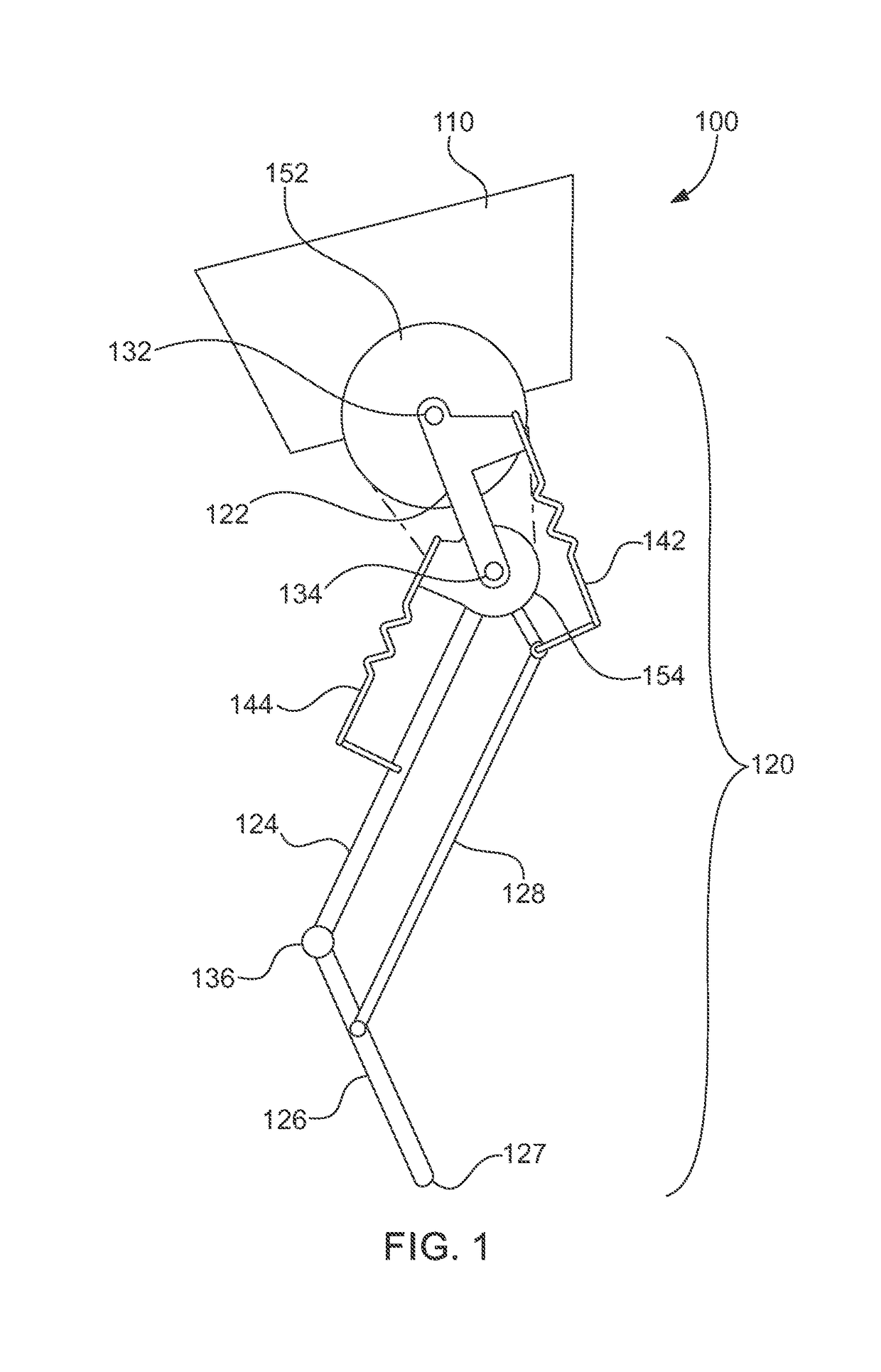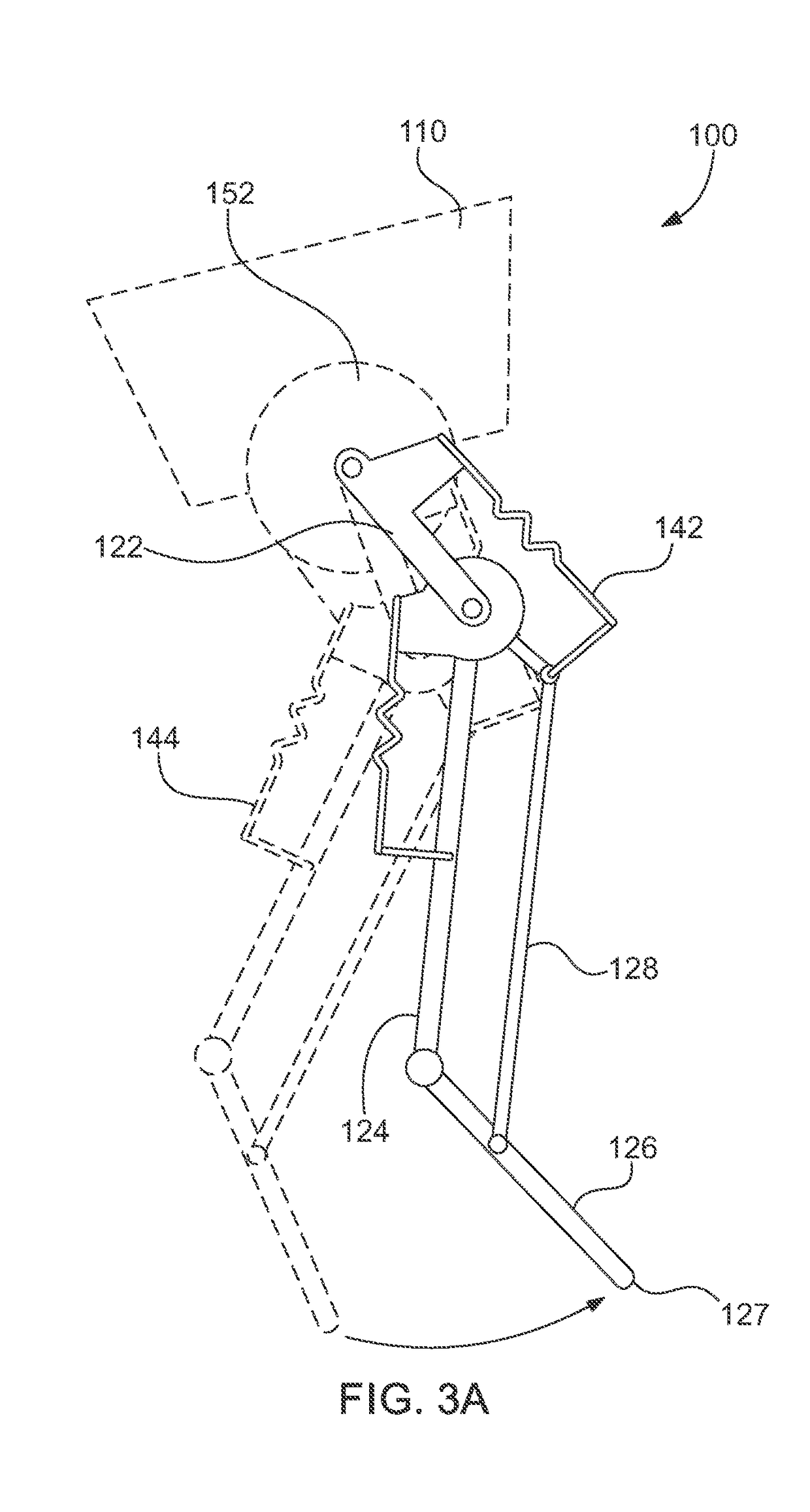Leg configuration for spring-mass legged locomotion
a legged locomotion and spring-mass technology, applied in the field of legged locomotion devices and methods, can solve the problems of affecting so as to achieve passive stability and improve the stability of the legged locomotion. the effect of stability
- Summary
- Abstract
- Description
- Claims
- Application Information
AI Technical Summary
Benefits of technology
Problems solved by technology
Method used
Image
Examples
Embodiment Construction
[0032]Referring now to the figures, wherein like elements are numbered alike throughout, FIGS. 1 and 2 schematically illustrate an exemplary robot 100 having an exemplary leg 120 for legged locomotion. One exemplary configuration of a robot of the present invention may include: a leg 120 comprising at least first, second, and third links 122, 124, 126, connected to each other by joints 134, 136 and to a body 110 by a joint 132; a first actuator 162 mounted on the robot body 110 to primarily control leg angle; a second actuator 164 disposed on the first link 122 used primarily to control leg length; the use of physical springs 142, 144 in the leg 120, in a literal approximation of a spring-mass model to create series elasticity between the distal two links 124, 126 and the actuators 162, 164 and the first link 122 and the second pulley 154; the use of mechanical transmissions 152, 154, such as pulleys, to constrain the motion of the at least three links 122, 124, 126 so they can be c...
PUM
 Login to View More
Login to View More Abstract
Description
Claims
Application Information
 Login to View More
Login to View More - R&D
- Intellectual Property
- Life Sciences
- Materials
- Tech Scout
- Unparalleled Data Quality
- Higher Quality Content
- 60% Fewer Hallucinations
Browse by: Latest US Patents, China's latest patents, Technical Efficacy Thesaurus, Application Domain, Technology Topic, Popular Technical Reports.
© 2025 PatSnap. All rights reserved.Legal|Privacy policy|Modern Slavery Act Transparency Statement|Sitemap|About US| Contact US: help@patsnap.com



